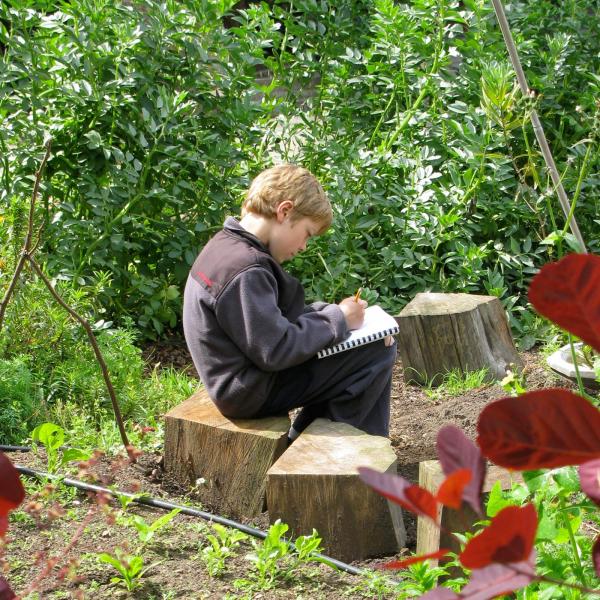How the Evolution of Global Eating Habits Affects our Children

In less than one person's lifespan in the U.S., we have gone from being a nation concerned with undernutrition to a nation vexed by the health consequences of overnutrition.
Today, less than two percent of the U.S. population is directly engaged with agriculture. With so many people experiencing the results of poor nutrition, having children grow and prepare their own food in school can provide them with valuable knowledge about nutrition and health — as well as about biology, geography, ecosystems, and the environment.
Strong food preferences are deeply rooted in the unexamined practices of families, communities, cultural groups, and national economies in which we all grow up. Yet in recent years, as the result of factors such as increased food trade, improved communication, urbanization, and the movement of large food companies into new markets, we have seen extraordinary changes in the "ordinary" diets of people across the world. Especially in urban environments, patterns of food consumption are shifting: people are eating less of traditional staple foods like rice, wheat, and cassava and consuming more processed and refined foods with more fat, sugar, salt, and animal products.
For example, as China industrializes, consumption of fast food is sweeping across that country at a breathtaking pace, and public health officials note the alarming increase in diabetes among younger and younger Chinese. The September 13, 2006 New York Times featured a cover story chronicling a sharp increase in type 2 diabetes among India's urbanized population, a direct function of shifting dietary patterns. Ironically, while the impacts of diabetes are felt more heavily among the poor in the United States, the middle class in India is experiencing higher rates of the disease. New found affluence is leading to increased consumption of culturally sanctioned sweets for a widening variety of symbolic events and occasions.
There is no one best strategy for intervening in this worldwide situation. The Nation devoted its full September 11, 2006 issue to food policy; dozens of commentators, researchers and analysts weighed in on the problem. In that issue, we proposed that a good place to start is public schools, where young children can come to an understanding of a nutritious and healthy diet through the process of engaged learning.
The idea that students learn best when they are engaged is not new or revolutionary. John Dewey, the dean of the distinctly American philosophical tradition called pragmatism, founded the University of Chicago Laboratory School on the principle that students would learn best about connections between diet, health, and environment if they were engaged in growing food in a garden, preparing it in the kitchen, and bringing it to the table for consumption.
If we intend to alter our eating habits to avoid the predicted health crisis connected to the pandemic of childhood obesity and type 2 diabetes, we need to regulate the kinds of food sold in and around the school site — much as we now do with smoking, alcohol, and drug consumption. But we also need to put into place long-term planning, including experiential learning programs that change how we learn and think about health, and bring us into a new relationship with food. The recent School Lunch Initiative (SLI) by the Berkeley Unified School District represents a promising national model of engaged learning to meet these ends.
The school district has approved a school lunch program, in partnership with the Center for Ecoliteracy, Chez Panisse Foundation, and Children's Hospital Oakland Research Institute, that is far more than just a project to change what students eat at the noon hour. It is a daring attempt to change the institutional environment in which children learn about food at an early age, a comprehensive approach that has them planting and growing the food in gardens, learning biology and biochemistry through an engaged learning process, and often cooking the food that they grow. If all goes well, these experiences will lead to a better understanding of the complex relationship between nutrition and physiology. Knowledge gained through this integrated learning experience (in contrast to learning from a decontextualized, abstract, rote process) is more likely to be retained and to be transferred to parents and siblings as students share experiences and preferences with their families.
The use of food as a curricular focus requires revisiting pedagogy. We should not be Pollyannaish about the challenges. Unless school systems can find innovative ways to restructure curricula so that instructors do not experience this retooling as an add-on to an already full teaching schedule, resistance is inevitable. The task will be made easier if instructors are themselves engaged and come to see this as a way to make differences in their students lives as well as their own.
Moreover, since we know that dietary preferences are formed early and are strongly influenced by culture, rather than assuming that one size fits all when it comes to taste, school communities can use meal programs as opportunities to explore local food cultures and traditions and regional agricultural influences by finding menus that resonate with a broad range of local tastes. For example, schools can teach about much more than diet through health-mindful approaches to meals that reflect Mexican, Chinese, Italian, Puerto Rican, Caribbean, or Midwestern cuisines of a community or region.
Taking time to understand the cultural influences that form eating habits and food choices means that engaged learning with food production can focus on the social as well as the natural sciences. As students and teachers become aware of different cuisines, they can learn more about the rich cultural heritage of the foods that we eat, including such enlightening histories as when various ethnic groups brought specific seeds to the United States and the different waves of agricultural laborers responsible for cultivating these crops.
The transition from agrarian to modern society has created unforeseen health challenges. Adopting an engaged learning approach through a re-familiarization with agricultural production and consumption will help children, parents, and future generations learn what it means to eat healthy food and live healthy lives.




